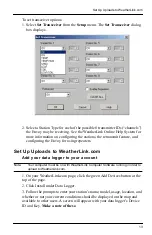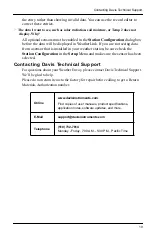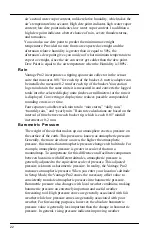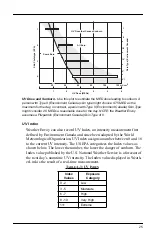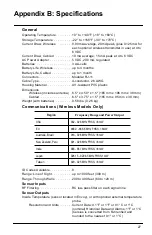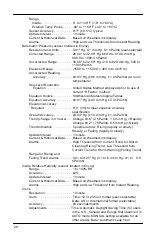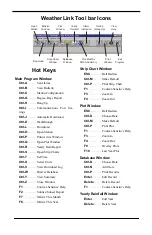
23
conditions while falling pressure indicates deteriorating weather
conditions
Solar Radiation
Note:
Requires that the Weather Envoy listens to station with optional solar radiation sen-
sor attached (#6450, included on Vantage Pro2 Plus weather stations).
What we call “current solar radiation” is technically known as Global
Solar Radiation, a measure of the intensity of the sun’s radiation reaching
a horizontal surface. This irradiance includes both the direct component
from the sun and the reflected component from the rest of the sky. The
solar radiation reading gives a measure of the amount of solar radiation
hitting the solar radiation sensor at any given time, expressed in Watts/sq.
m (W/m
2
).
UV (Ultra Violet) Radiation
Note:
Requires optional UV sensor (#6490, included on Vantage Pro2 Plus weather
stations).
Energy from the sun reaches the earth as visible, infrared, and ultraviolet
(UV) rays. Exposure to UV rays can cause numerous health problems,
such as sunburn, skin cancer, skin aging, cataracts, and can suppress the
immune system. The Weather Envoy can help analyze the changing
levels of UV radiation and can advise of situations where exposure is
particularly unacceptable.
CAUTION:
Be aware that the UV sensor readings do not take into account UV reflected off
snow, sand, or water, which can significantly increase the amount of UV to which
you are exposed. Nor do the readings take into account the dangers of prolonged
exposure to UV radiation. The readings do not suggest that any amount of expo-
sure is safe or healthful. Do not use the UV readings to determine the amount of
UV radiation to which you expose yourself. Scientific evidence suggests that UV
exposure should be avoided and that even low UV doses can be harmful.
WeatherLink displays UV readings in two scales: MEDs and UV Index.
UV MEDs (Minimum Erythemal Dose) is defined as the amount of
sunlight exposure necessary to induce a barely perceptible redness of the
skin within 24 hours after sun exposure. In other words, exposure to 1
MED will result in a reddening of the skin. Because different skin types
burn at different rates, 1 MED for persons with very dark skin is different
from 1 MED for persons with very light skin.
Both the U.S. Environmental Protection Agency (EPA) and Environment
Canada have developed skin type categories correlating characteristics of
skin with rates of sunburn.
Summary of Contents for Vantage Pro2 Weather Envoy
Page 31: ......





